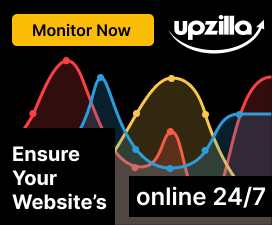haleakua
Member
- Joined
- Mar 7, 2015
- Messages
- 61
- Points
- 8
The trends in designing mobile apps go, come and evolve as time passes, but some are here to stay. 2015 has just begun, but there are certain trends that have begun to emerge and you have to keep in mind if you are thinking about creating a mobile app for your business.
These are the 5 most important trends in the design of mobile apps and that will mean a change from previous work.
1. Larger screens
The screens of smartphones are becoming larger and is expected to sell these devices grow in 2015. What will this mean for application designers? Research by Steven Hoober in 2013, showed that most users use their smartphones with one thumb, keeping them in the lower right corner, but this research was done based on devices up to 4.3 inches.
By using a larger smartphone, you have no one to hold in one hand while operating with the other, in the same way we use tablets. Could this be a more universal approach to UX design smartphones and tablets?
2. The depth of designs
In the last couple of years have seen a growing trend towards minimalism and flat design. This will continue in 2015, but the subtle forms of skeumorphismo, are finding their way back. This trend is characterized by the imitation of materials such as wood, leather and features such as the effect of turning a page. This can see in many of the latest Apple Apps such as contacts, calendar, notes etc. This trend is loved and hated to 50% by designers.
The clearest expression of this philosophy is the treaty of Design that Google announced in July 2014. Although Google applications are flatter and conform to a strict grid, the components inside have their own depth and presence.
3. Hidden Menus
While some trends are growing rapidly in response to the development of new hardware, others have had more time to grow.
The screens may be becoming larger, but the fact that mobile applications offer less workspace than their desktop and laptop. A solution to this problem is to hide the menus until needed use, thus only have . the tools you want to use immediately on your screen This trend is a general purpose: to maintain neat and clean screen.
4. Joy and personality
Other trends are developed in response to a cultural demand rather than to changes in the hardware. Have you noticed that applications are becoming happier? It's as if the developers they were rebelling against the conservative nature of flat design , with brighter colors and fun designs. Even dialogs have changed and now have a more informal and personal.
5. Increased connectivity
Applications that use are increasingly connected to the environment, as with GPS and Bluetooth, which help locate and connect with other devices. But these technologies also help our applications to capture other data. With iBeacon Apple and other technologies based on Bluetooth LE, applications will be able to tell where we are when we are still inside.
Technologies such as portable smartwatches and fitness bracelets, is collecting data on us constantly, not only from our location, if not where we are at certain times of day: when we eat, when we work, when we rest etc. This information can be used to improve the use of your mobile applications. It will not be long until we have applications that offer us buy tickets when we meet next to a train station, or make a list of places to eat near where we find lunch...etc
These are the 5 most important trends in the design of mobile apps and that will mean a change from previous work.
1. Larger screens
The screens of smartphones are becoming larger and is expected to sell these devices grow in 2015. What will this mean for application designers? Research by Steven Hoober in 2013, showed that most users use their smartphones with one thumb, keeping them in the lower right corner, but this research was done based on devices up to 4.3 inches.
By using a larger smartphone, you have no one to hold in one hand while operating with the other, in the same way we use tablets. Could this be a more universal approach to UX design smartphones and tablets?
2. The depth of designs
In the last couple of years have seen a growing trend towards minimalism and flat design. This will continue in 2015, but the subtle forms of skeumorphismo, are finding their way back. This trend is characterized by the imitation of materials such as wood, leather and features such as the effect of turning a page. This can see in many of the latest Apple Apps such as contacts, calendar, notes etc. This trend is loved and hated to 50% by designers.
The clearest expression of this philosophy is the treaty of Design that Google announced in July 2014. Although Google applications are flatter and conform to a strict grid, the components inside have their own depth and presence.
3. Hidden Menus
While some trends are growing rapidly in response to the development of new hardware, others have had more time to grow.
The screens may be becoming larger, but the fact that mobile applications offer less workspace than their desktop and laptop. A solution to this problem is to hide the menus until needed use, thus only have . the tools you want to use immediately on your screen This trend is a general purpose: to maintain neat and clean screen.
4. Joy and personality
Other trends are developed in response to a cultural demand rather than to changes in the hardware. Have you noticed that applications are becoming happier? It's as if the developers they were rebelling against the conservative nature of flat design , with brighter colors and fun designs. Even dialogs have changed and now have a more informal and personal.
5. Increased connectivity
Applications that use are increasingly connected to the environment, as with GPS and Bluetooth, which help locate and connect with other devices. But these technologies also help our applications to capture other data. With iBeacon Apple and other technologies based on Bluetooth LE, applications will be able to tell where we are when we are still inside.
Technologies such as portable smartwatches and fitness bracelets, is collecting data on us constantly, not only from our location, if not where we are at certain times of day: when we eat, when we work, when we rest etc. This information can be used to improve the use of your mobile applications. It will not be long until we have applications that offer us buy tickets when we meet next to a train station, or make a list of places to eat near where we find lunch...etc








